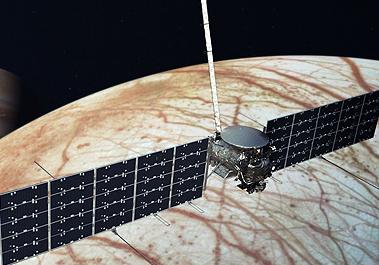On Oct. 14, the Europa Clipper spacecraft lifted off from Kennedy Space Center, starting a 400 million-mile journey to the planet Europa.
It wasn’t until 2015 that the mission was approved and a small team was formed. However, the mission faced several setbacks, originally planned for launch in 2022; it was delayed by the COVID-19 pandemic, budget requests, management shifts, and Hurricane Milton.
Mission Background
The concept of a mission to Europa traces back to the late 1990s when the planetary orbiter Galileo was in orbit of Jupiter, making annual flybys of Europa. The scientific instruments onboard scanned the surface of the moon, collecting data. Data from the Voyager probes in the late 70s and early 80s suggested that Europa had at least some active geography, but had given little information on why that might be. Galileo’s more advanced technology, however, uncovered data that suggested that an ocean existed underneath the frozen surface of Europa.
Immediately after this discovery, discussions within NASA began to launch a follow-up mission to Europa. But at first, many of these proposals were shot down. NASA’s budget was being eaten up by the Space Shuttle Program, and the scraps of money were going back to low-budget planetary missions like the Spirit and Opportunity Mars rovers. A mission to Europa would have to have to have pounds of fuel, several years of life expectancy, and a whole team of engineers and scientists being paid a reasonable salary. The conclusion was simple: Not yet.
The Possibility of Life
Europa is a mystery to many scientists, a moon of Jupiter slightly smaller than ours, the temperature on the surface is stone cold- 225 degrees Fahrenheit (142.7 degrees Celsius.) Its atmosphere is razor thin, no life on Earth could breathe on the surface, and the radiation would kill a human within hours, according to NASA. At first glance, the possibility of life flourishing here seems impossible.
However, many scientists disagree with this conclusion because of the debate over Earth’s biological beginning.
“If we think about the history of the Earth, at some point in the past there was no life and now the place is practically bursting at the seams with it. How did that happen?” Sam Sholtis of Penn State Eberly Colleges of Science wrote in the article “How Did Life Begin?”
Students at State High shared their opinions on whether they believed that life could be found in such a hostile environment or even in the universe.
“I don’t [believe] aliens would survive on other planets because of the impossible living conditions,” freshman Rishi Patel said.
“I’m still on the fence about intelligent life but [I think alien life is] like microbes,” Grayson Goza said. “I doubt [we’re] alone because of the vast universe…there is so much out there.”
Many sources encouraged the idea that there was life on Europa, seeing its subsurface ocean as the biggest evidence point. But Scientific American was skeptical of life being possible on the Moon citing a discovery found by the Juno spacecraft. In March 2024, NASA released a study found by Juno that detected far less oxygen in the ocean of Europa than those on Earth.
A Mission For Humanity
No matter what Europa Clipper may find on Europa, NASA is certain that it will provide insights into the future of deep space exploration. The spacecraft should arrive at its destination in April 2030, where it will enter an elliptical orbit around the planet. It should make at least 44 flybys of Europa over three years.








